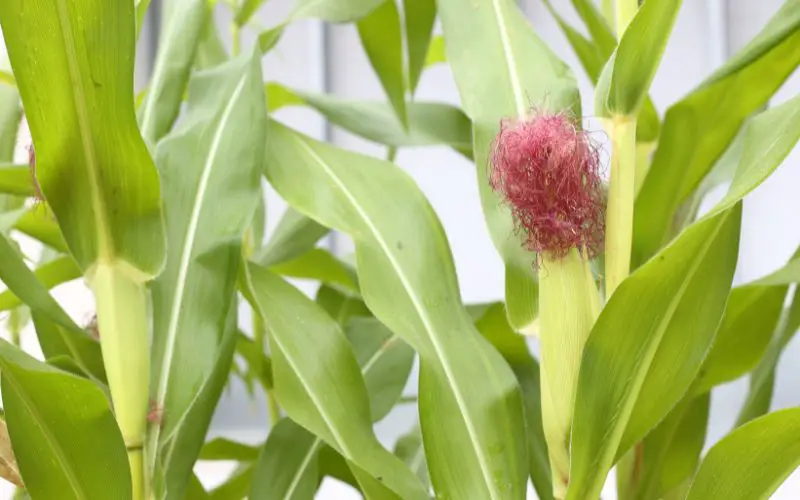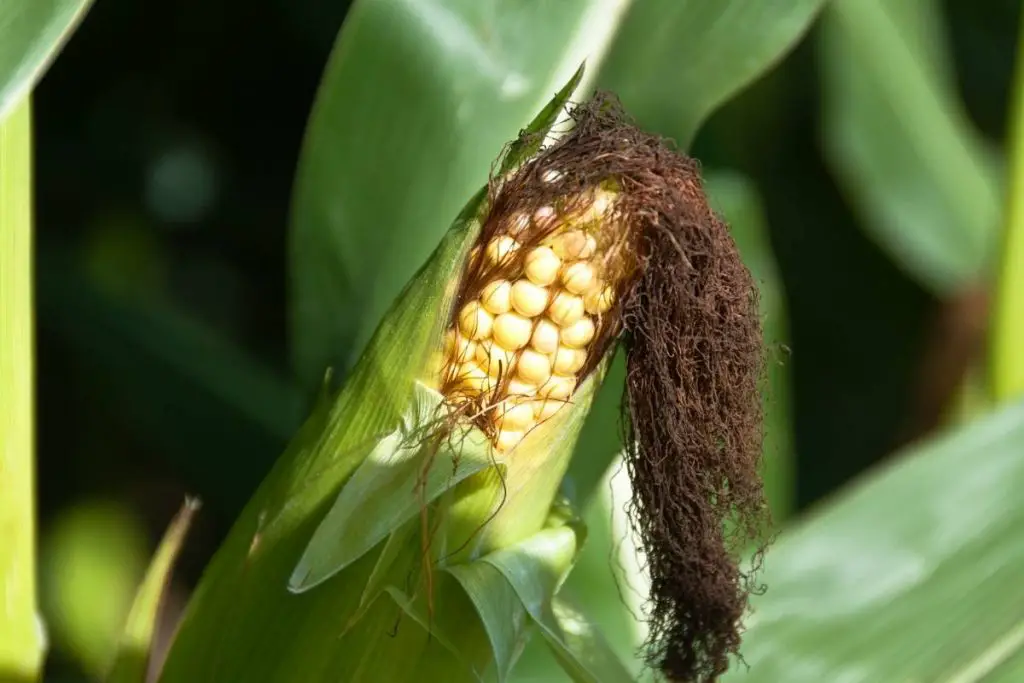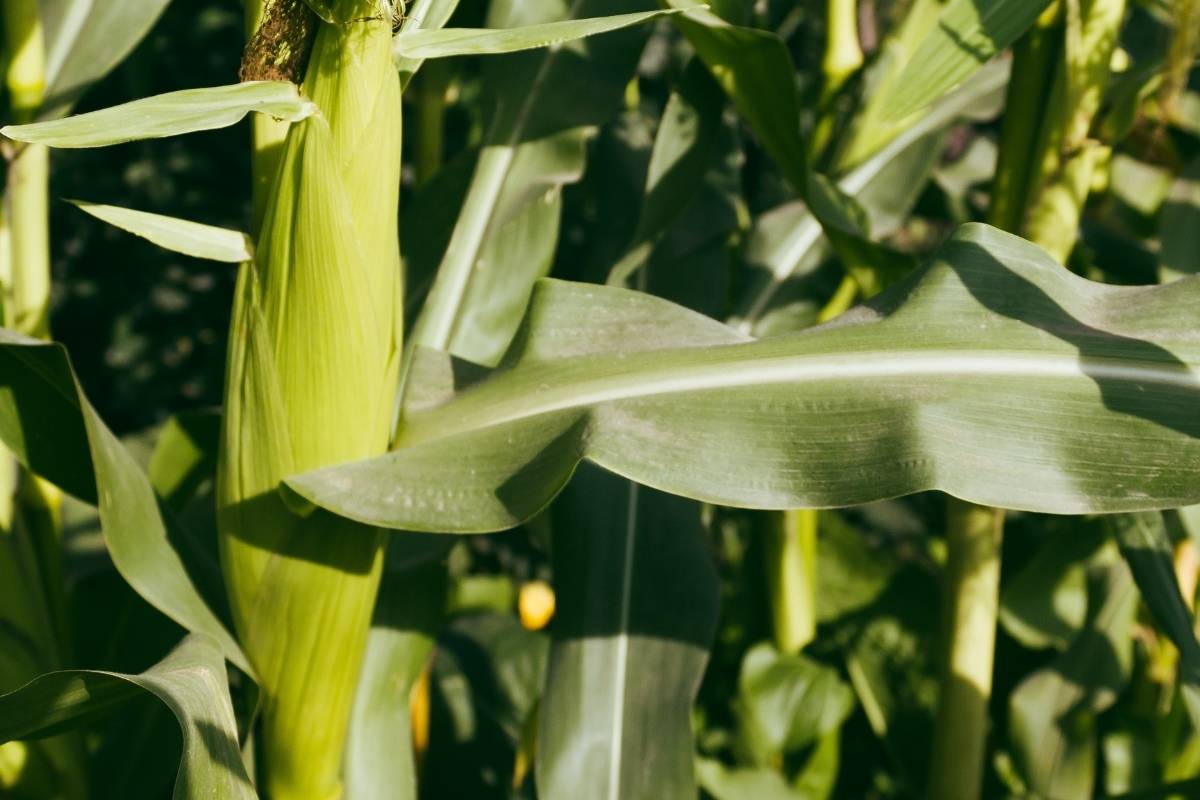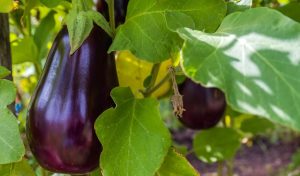I’ve grown baby corn many times and have had varied results – normally as a result of changeable weather conditions meaning some years have been better than others.
One thing I’ve found is that it’s possible to get good results with baby corn and often this is more reliable than trying to grow full sized corn cobs.
Baby corn is great for pots, small gardens, tubs and grow bags of compost.baby
Baby corn doesn’t like to be moved, so sow the seeds where it is to grow. This can be in a bed outside or in a pot of compost. Plant in a grid so that pollination is easier. Give the plants as much sun as possible and keep them well watered ( but not boggy ). Keep the plants sheltered from wind and feed regularly for best results.
How do you grow baby corn at home?
Sow the seeds for baby corn in 2 inch/ 5 cm pots or trays in June.
Use a good quality seed compost and cover the seeds with an extra fine vermiculite to aid germination.
The best conditions are temperatures of 65 – 75 °F / 18 – 24° C at night, and day temperatures of 70 – 85 °F / 21 – 29° C.
Water well and place in a propagator or on a warm windowsill indoors.
You can also start the seeds off outside if you are lucky enough to have a mild spell at the right time of year, however this is not recommended with some varieties as birds are very partial to eating them.
As the plants start to grow pinch out the top set of leaves and leave about 6 – 8 inches / 15 – 20 cm of stalk.
This will encourage side shoots and further harvest.
[amazon box=”B07QS6Z1XW” template=”horizontal”]
What month do you plant corn?
Corn needs a long growing season, so start the seeds off as early as possible. The corn is happy to be planted into the soil or grown in pots of compost.
If it’s too cold outside you can use an indoor propagator or germinate the seed on a windowsill.
Plant out after all risk of frost has passed and the soil has warmed up. You need to wait until the days are long and warm, normally from May through to August.
How deep should you plant corn?
Plant the baby corn seed in a grid, about 2 – 4 inches / 5 – 10 cm deep in good compost.
If growing in bags of compost you can plant several seeds together or plant 1 per bag.
Keep them evenly watered for best results and don’t let the compost get too wet.
Water from below if possible to avoid fungal problems.
If using trays of compost you can water from above but if the seedlings get wet leaves at this stage they may die back.
What type of corn is best for growing?
There are a couple of types you can try growing including: regular sweetcorn, sugar enhanced or supersweet seed varieties.
All these names refer to the type of sweetcorn seeds being sold.
Although supersweet types were bred for eating, they are still good to grow for baby corn as it does take longer than regular sweetcorn and is slower growing.
When trying new varieties, sow a few different ones at the same time to see which produce best results.
Once you’ve grown your own, you’ll find that some varieties produce better yields than others and are easier to grow.
Some of the best varieties include:
Silver Queen – light yellow kernels when fully dried with good germination rates on all seeds.
The sweetcorn is a large cob variety which has a distinctive white stripe along the length of each kernel when mature.
Sugar Buns – this early variety produces large, fleshy candy-like cobs of white kernels with just a hint of red. The plants are vigorous and produce high yields.
Early Jester – another early maturing type which grows in about 85 days from sowing to harvest. This variety is best grown indoors but can easily be transplanted outdoors.

What can you do if seeds don’t germinate?
If the seed hasn’t germinated and you have waited up to 12 weeks, try another variety or check out a local grow shop for baby corn seed that they may have in stock.
You can also try sowing the seeds in fresh compost and watering from below to increase the humidity level.
If you’re sowing several seeds together, then thin out to one plant once they have germinated.
Once you’ve tried a few varieties you will find which ones grow best in your location and are easier to grow.
You may also like to try different planting times as some corn plants are early maturing or late maturing types.
What space do you need for growing baby corn?
The plants can be grown outdoors in a sunny site for best results, or alternatively they can be grown in pots and moved indoors after all danger of frost has passed.
You will need quite a bit of space to grow the plants as each stalk can grow up to 4 – 5 feet / 1.5 – 2 metres tall, so you may want to train them against a framework such as trellis or netting.
How do you grow corn in containers?
Pots are the easiest way of growing corn indoors and this is one of the best methods if you’re short of space or unable to grow outdoors.
You can either use compost in large pots, or if you prefer plastic then buy the smaller sized trays of compost and sow your seeds in these.
Pots will need watering regularly as it’s not possible for the soil to hold moisture as well as it could outside in a garden bed.
However, they do tend to dry out less quickly than when growing outdoors.
You may need to water every morning during hot spells or if the weather is very dry.
How do you look after corn plants?
Once they are growing well and flowering, the plants will require some support for the cobs to grow upright.
This can be done using a plant cane, similar to the type used for tomatoes.
If you’re growing corn outdoors, then protect them from slugs and snails during the early stages of growth by covering the beds with fleece or laying down a thick layer of newspaper at night.
The plants are a tasty treat for these creatures if they haven’t been attacked by pests already and decent slug control is important to have a successful crop.

How fast does baby corn grow?
Baby corn is ready for harvest in 6 – 8 weeks. This does depend on whether you are growing the plants outside or inside, as well with the variety of corn that you have chosen to grow.
As a rule of thumb though expect to see your baby corn plants grow about 6 inches / 15 cm per week.
How do you harvest baby corn?
Baby corn should be harvested when the cobs are about 8 – 10 inches / 20 – 25 cm tall.
This is usually 6-8 weeks after planting. To get good results you should pinch out the top set of leaves and leave about 6 – 8 inches / 15 – 20 cm of stalk.
This will encourage side shoots further down the cob for you to harvest. As well as this, continue to give the plants a good drink and feed with a high nitrogen fertilizer.
Does corn grow back every year?
It can reseed itself and grow back year after year.
However, it is best to remove the plants after harvest and to start with new plants the following year.
What is one way that you can extend your growing season to help to grow baby corn?
One way to extend your growing season is by using a cold frame in late Spring or early Summer. Make sure that you provide a good compost and keep the plants well watered.
Baby corn can also be grown in pots throughout the year as long as you pay attention to how much light it gets.
It will do fine in a windowsill if you bring it inside from the cold.
Does baby corn need full sun?
Yes, baby corn does best when placed in full sun or part shade.
Make sure that you shelter it from the wind and also be careful not to over water as this can cause the plants to rot.
What is best fertilizer for corn?
A good quality balanced fertilizer will be perfect for growing corn in your garden.
This will give the seedlings a boost to help them get started before going into the ground.
Make sure to water well after you have fertilized, and keep the compost moist.
If you can, avoid using chemicals in your garden when planting corn due to the delicate nature of the plants.
What type of corn should you plant if you want to have a continuous supply of baby corn in the summer?
The best option for being able to harvest baby corn all summer long is to grow different varieties together.
Varieties that are ready at different times will help prevent you from having gaps in your crop.
When growing different varieties make sure to stagger the planting times, so that you are able to harvest regularly.
Final Words
If you follow the advice given here then it should ensure that you get all of the important elements right for growing sweetcorn successfully.
It is best grown using good quality compost and fertilizers, as well as being watered regularly throughout the season.
It is also important to have a regular harvest schedule, so that you are always able to enjoy fresh sweetcorn.
When growing baby corn plants outside, make sure that they get enough water during dry periods or the plants will wilt and fail.






